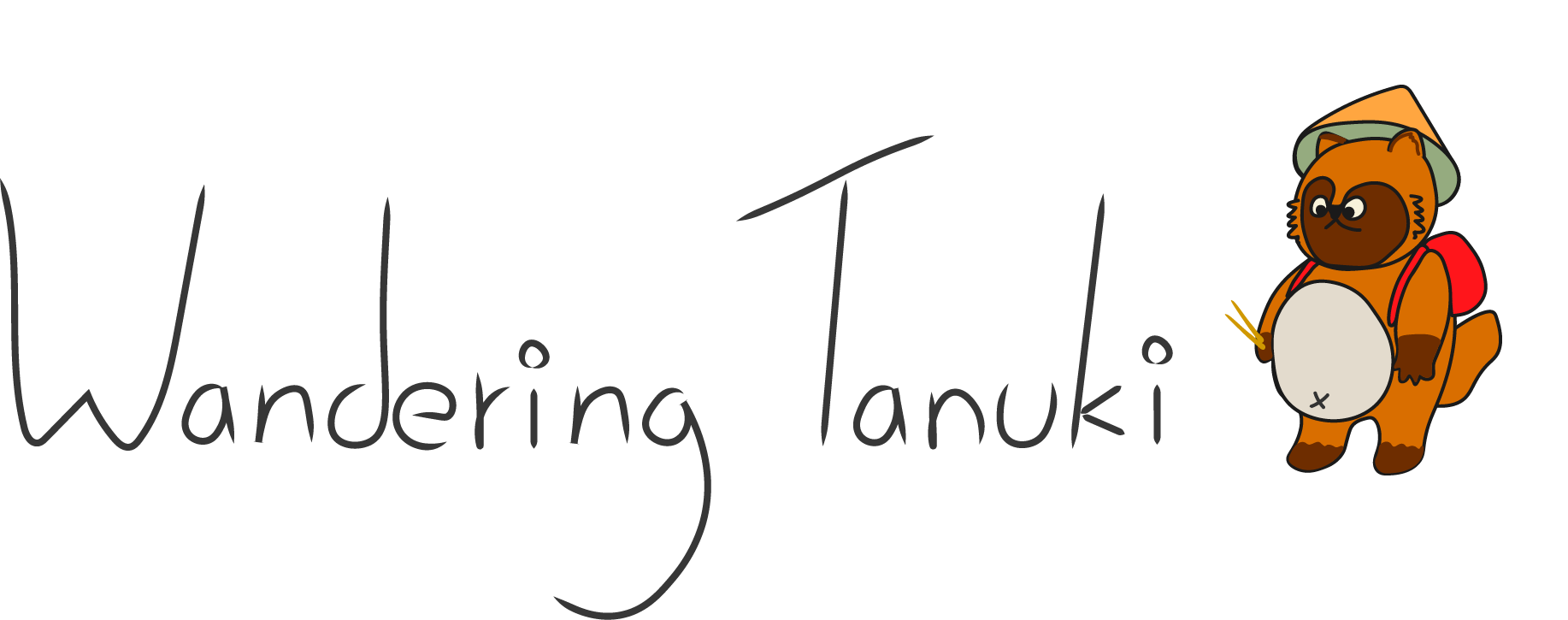Colors in Japanese: Everything you need to know
Did you know that colors in Japanese often have unique meanings and origins? This makes sense because dyeing fabric has been a Japanese tradition since the 8th century. There are also the beautiful Japanese woodblock prints calle Ukiyo-e, which have been around since the 17th century.
The Japanese word for color is 色 (iro). Color names often reflect nature and objects in real life. For example, the word for grey is 灰色(hai iro) meaning “ash color” and pink is 桃色 (momo iro) meaning “peach blossom color”.
The shades of Japanese colors can be slightly different from the concept in English. Throughout the article there will be color blocks to show the exact color in Japanese.
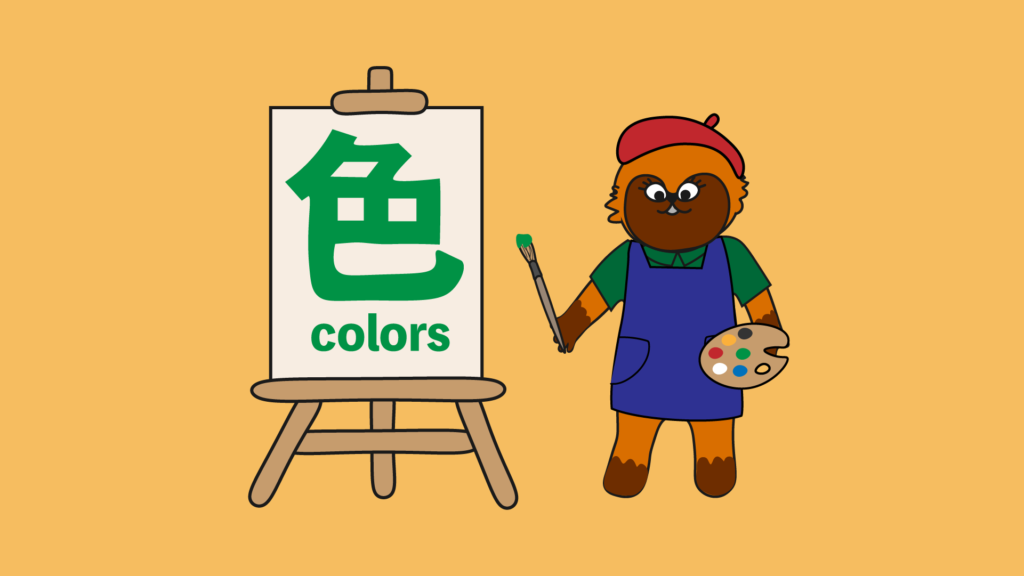
Tanuko will be guiding you through everything you need to know about colors in Japanese!
Common Colors
Here are some common colors that you’ll want to know in Japanese. It’s easier to remember and more interesting when you know the backstory behind each color.
Note: Some colors have a parenthesis with the word 色(iro), meaning color. In Japanese, colors often have the word “color” or iro used in their name. When they are in parenthesis, it means that you can refer to the color with or without 色(iro).
黒 – kuro – black
This word works in the same way as the color “black” in English. However, there are instances where kuro is used as something similar to “dark”.
For example, Japanese dark brown sugar is 黒砂糖(kurozatou) even though it’s not black.
白– shiro – white
Shiro originally comes from 著しい(ichijiru shii) which means “striking” or “remarkable”. This word used to be pronounced ichishiroshi, and came to describe the striking color of white.
The idea that white is “striking” shows when Japanese people say 白黒させる (shirokuro saseru). This means to get clarity.
White can also means “blank”. For example, 頭の中が真っ白 (atama no naka ga masshiro). This means you’ve completely blanked out.
灰色 – hai iro – grey
灰, Hai, means “ash”. This name describes the grey color of ashes. It can also be called 鼠色 (nezumi iro) which means “mouse color”.
黄色 – kiiro – yellow
There are different ideas on the origin of the word kiiro, but some say that it came from the word for gold which is 金色 (kin iro). Before the word kiiro existed, people categorized yellow with red because it was associated with autumn leaves.
赤 – aka – red
Aka comes from the word 明らか (akiraka) which means “obvious” or “apparent”. This is why there are some uses of aka that might be confusing for Japanese learners.
For example, 赤の他人(aka no tanin) means “A complete(obvious) stranger” or 真っ赤な嘘(makka na uso) means “obvious lie”.
When used as the meaning of red color, some interesting words are 赤ちゃん (akachan) which means baby. This comes from the way that babies often look red when they are born.
緑 (色) – midori (iro) – green
The word midori comes from the “fresh” image of green. 瑞々しい(mizumizu shii) meaning fesh, young, and vibrant was the word origin.
In Japan, there’s also an association of green with “beginners”. New drivers in Japan must put a sticker on their cars that are yellow and green.
青 – ao – blue
Blue is an important color for Japanese people because it is associated with indigo dye. Japan has been dyeing with indigo for more than one thousand years. Indigo is called 藍(ai) which is said to have eventually morphed into the word for blue, ao.
Ao also has an image of youth in Japan. For example, 青春(seishun) meaning “springtime of youth” is written with the kanji for “blue spring”. There is also 青臭い(aokusai) meaning “inexperienced” using the kanji that translates to “blue smell”.
紫 (色) – murasaki (iro) – purple
Murasaki comes from ムラサキ草(murasaki kusa), which is a plant that was used to make a purple dye. In old Japanese history, it was a color that was special and could only be used by the imperial family.
オレンジ色 / 橙色 – orenji iro / daidai iro – orange
Orange can be found in two different ways. オレンジ (orenji) is the katakana spelling of the word “orange”. 橙色 (daidai iro) is named after a type of Japanese bitter orange called 橙 (daidai).
The two color names have slightly different shades due to the Japanese bitter orange having a lighter shade than a generic orange.
ピンク(色) / 桃色 – pinku (iro) / momo iro – pink
There are also two ways to say “pink” . Pinku iro refers to the concept of “pink” in English. Momo iro uses the word for “peach” and it’s the color of peach flowers.
茶色 – cha iro – brown
This is a color that uses the word “tea” or 茶 in its name. This might be confusing since Japanese people drink huge amounts of green tea. The reason behind the naming comes from the use of tea leaves as dye, which produced the color brown.
金色 – kin iro – gold
Although not exactly a color, kin iro, expresses the metallic gold color. The name comes from the kanji for gold, 金(kin).
銀色 – gin iro – silver
This is also a metallic color, using the word for silver which is 銀(gin).
Light and Dark colors
Unlike in English, lighter and darker colors often have their own names. Here are some common color names that are darker or lighter.
水色 – mizuiro – light blue

Mizuiro translates to the color of water. Japanese people associate light blue with water.
黄緑 – kimidori – yellow green (light green)

Instead of light green, Japanese people tend to use kimidori which is actually a yellowish green.
紺色 – kon iro – dark (navy) blue

This color has been around in Japan for a long time. It’s considered the deepest color that you can get from dyeing with indigo.
焦茶 – kogecha – dark brown

This word translates to “burnt brown” in Japanese. It indicates a darker brown color as if it was burned.
Describing different shades
Lighter and darker colors can also be expressed by adding words that describe the main color.
Light colors
薄い(usui – light or weak), 明るい (akarui – bright) or 鮮やか (azayaka – vivid) can describe lighter colors. Simply add this description before the color name.
For example, you can say “vivid red” with the phrase 鮮やかな赤 (azayaka na aka). When using these words make sure to follow the rules of Japanese adjectives.
In particular, the most common way you’ll encounter light color names is using 薄い (usui – light or weak). This is added to the name of the color in the form of 薄(usu) without the い.
For example:
薄紫 – usumurasaki – light purple
薄桃色 – usumomoiro – light pink
薄橙色– usudaidai iro – light orange
Dark colors
深い (fukai – deep), 暗い (kurai – dark), or 濃い (koi – dark and concentrated) can be used to indicate darker shades of colors. For example, you could talk about a dark yellow by saying 濃い黄色 (koi kiiro).
You’ll also sometimes see dark color names with 深い (fukai – deep) without the い.
For example:
深緑 – fukamidori – dark green
深紫 – fukamurasaki – dark purple
Combined colors
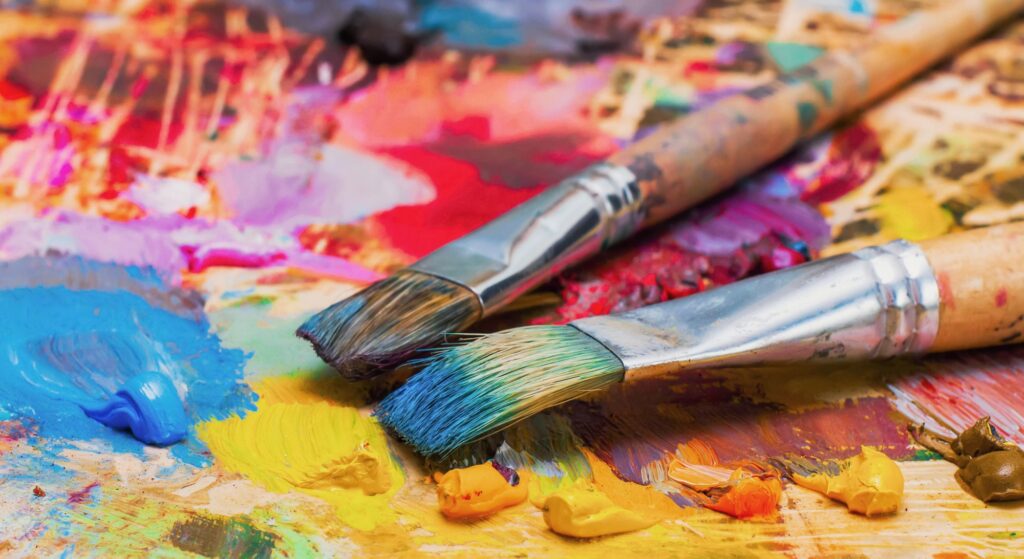
In English we sometimes combine two color names. This can also be done in Japanese.
Here are some examples:
赤紫 – aka murasaki – red purple (cherry pink color)
赤橙色 – aka daidai iro – red orange
青緑 – ao midori – blue green
青紫– ao murasaki – blue purple
Blue (ao) can be used for green (midori) in Japanese
Blue, ao, can sometimes stand for green, midori, in Japanese. This is because there were not many words for colors in old Japan. Only black, white, red, and blue existed. Green was a color in the blue category. This tradition has stayed into the modern language.
You’ll find that some objects are described by blue even though they are green.
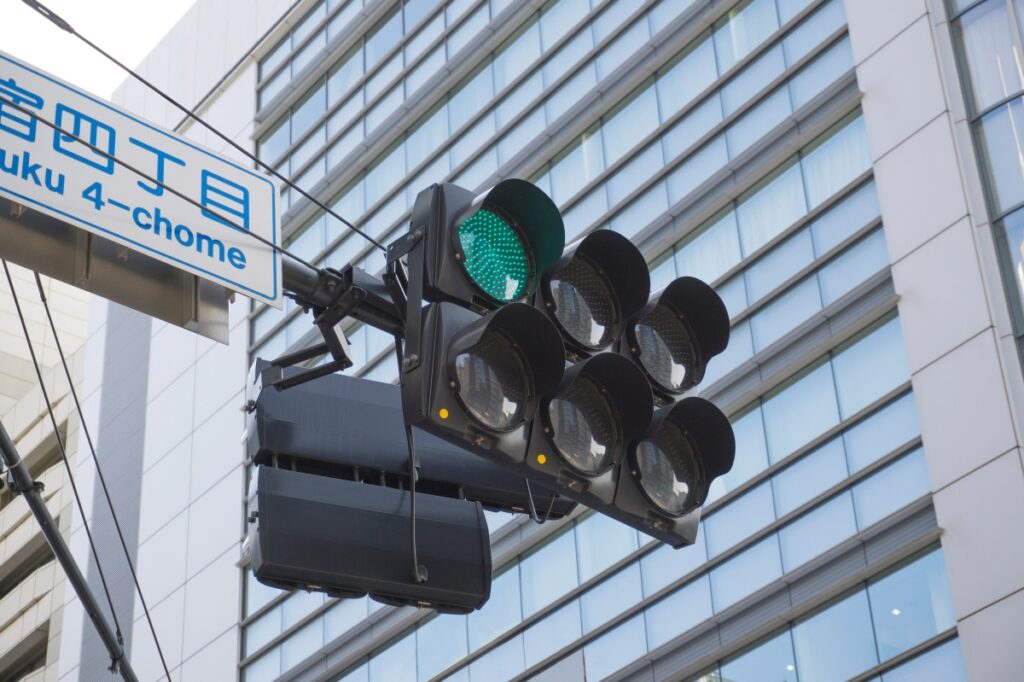
For example:
青信号 – ao shingou – green traffic light
青リンゴ – ao ringo – green apple
青紫蘇 – ao jiso – perilla plant
青葉 – aoba – fresh leaves
When Colors in English are used in Japan
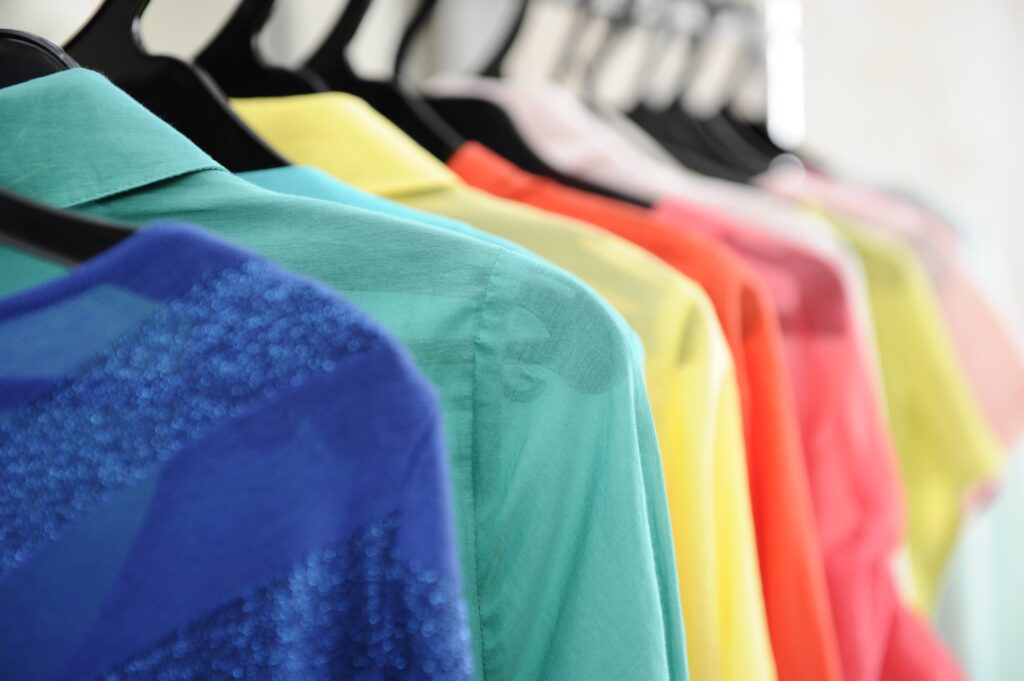
Marketing purpose
Japanese people find the English language as trendy and cool. This is why the English names of colors are often seen in katakana for marketing purposes.
The best example of the use of English color names are when new products come out.
For example, the iPhone color names are written on Apple’s website as:
グリーン – guriin – green
ブルー – buruu – blue
ブラック – burakku – black
ホワイト – howaito – white
Younger generation
The old names of colors are being replaced by English names for the younger generation. This can be seen in the words such as ピンク(pinku -pink) and オレンジ (orenji – orange). These days, the English names are used more frequently than the old Japanese names of momo iro and daidai iro.
In fashion
Since the English names are more trendy, fashion items are usually described by English color names. However, if you’re describing something that’s traditionally Japanese it makes sense to use the Japanese word.
Here’s an example where you might use the word purple, パープル (paapuru), in English.
パープルのドレス
Paapuru no doresu
Purple dress
If describing a kimono, it’s best to use the Japanese purple name, 紫(murasaki).
紫の着物
Murasaki no kimono
Purple kimono
Some unique Japanese colors
Perhaps due to the tradition of fabric dyeing and old Japanese art, there are some uniquely Japanese color names. Be sure to check out this website which has a list of all the Japanese traditional colors and names.
小豆色 – azuki iro – red bean color
If you’ve ever had Japanese desserts you may have tasted sweet azuki beans. These beans are a distinct reddish brown color which has given the name of this color.
月白 – geppaku – moon white
This is a beautiful name for a color that is slightly blue white. It depicts the soft glow of moonlight.
わさび色 – wasabi iro – wasabi color
This color is a soft green that describes the color of wasabi, a Japanese horseradish. It’s often eaten with sushi.
撫子色 – nadeshiko iro – nadeshiko flower color
The nadeshiko flower is a pink colored flower that has a strong symbolism in Japan. It describes the ideal traditional Japanese woman.
古代紫 – kodai murasaki – old purple
This is a purple color which has a slightly reddish tinge. During the Edo period there was a brighter purple that became popular. This word was used to differentiate the “old” purple.
溝鼠色 – dobunezumi iro – sewer rat color
Grey is often described by the word for nezumi, meaning rat. This color is the color of a sewer rat.
How to use colors to describe things in a sentence
っぽい – ppoi – ish
You can add this word ending to colors to say “ish”. For example, a yellowish house would be 黄色っぽい家 (kiiroppoi ie) and a greenish house could be 緑っぽい家(midorippoi ie).
真っ – Ma – completely one color
This is used before the color name to describe when something is covered in that color. A cat covered in black fur could be described as 真っ黒い猫(makkuroi neko).
Colors can be i-adjectives or no-adjectives
It’s important to know that some colors function as i-adjectives and others as no-adjectives. This is crucial when you’re using it in a sentence.
い (i) – adjective colors
Colors which function as i-adjectives are 黒 (kuro – black), 白 (shiro – white), 黄色(kiiro – yellow), 赤 (aka – red), and 青 (ao – blue).
To describe things, you simply need to add い (i) after the color.
For example:
白い家が見えた
Shiroi ie ga mieta
I saw a white house.
赤い家が欲しい
Akai ie ga hoshii
I want a red house.
の (no) – adjective colors
All other colors are no – adjective. Simply add a の after the color to describe things.
For example:
緑色の家が見えた
Midori iro no ie ga mieta
I saw a green house
金色の家が欲しい
Kin iro no ie ga hoshii
I want a gold house
Note that 黄色 (kiiro – yellow) and 茶色 (chairo – brown) can function as either kind of adjective.
Use as a Noun
You can also use colors as a noun. In this case, the color word is unmodified. Use colors as a noun when you want to say something is a certain color.
For example:
コーヒーは茶色です。
Koohii wa chairo desu.
The coffee is brown.
好きな色は赤です。
Suki na iro wa aka desu.
My favorite color is red.
I hope that this article gave some insight on everything you need to know about colors in Japanese! If you’re interested in other Japanese learning articles check out Filler words in Japanese: How to use them! or Aizuchi: A special Japanese conversation technique!
~ Tanuki
Sources for this article:
https://irocore.com/ Site with list of Japanese colors and explanations
Wikipedia in Japanese
http://gogen-allguide.com/ (a japanese resource that tells you word origins)
My own Japanese knowledge





